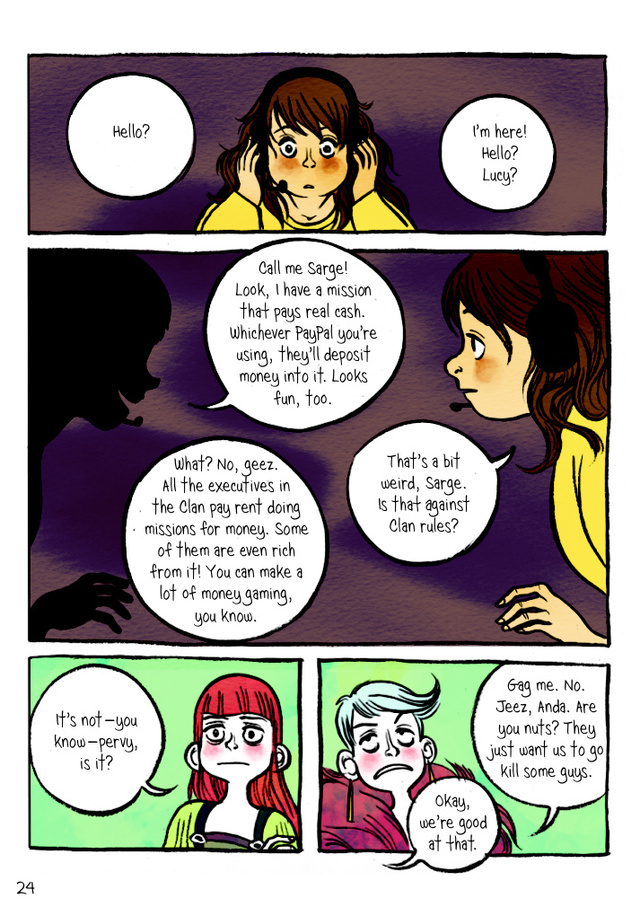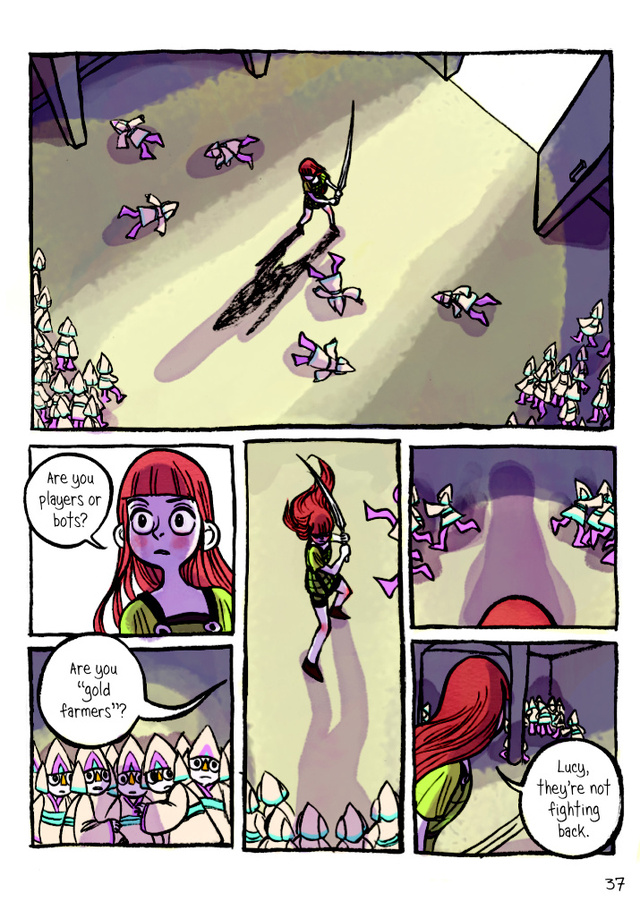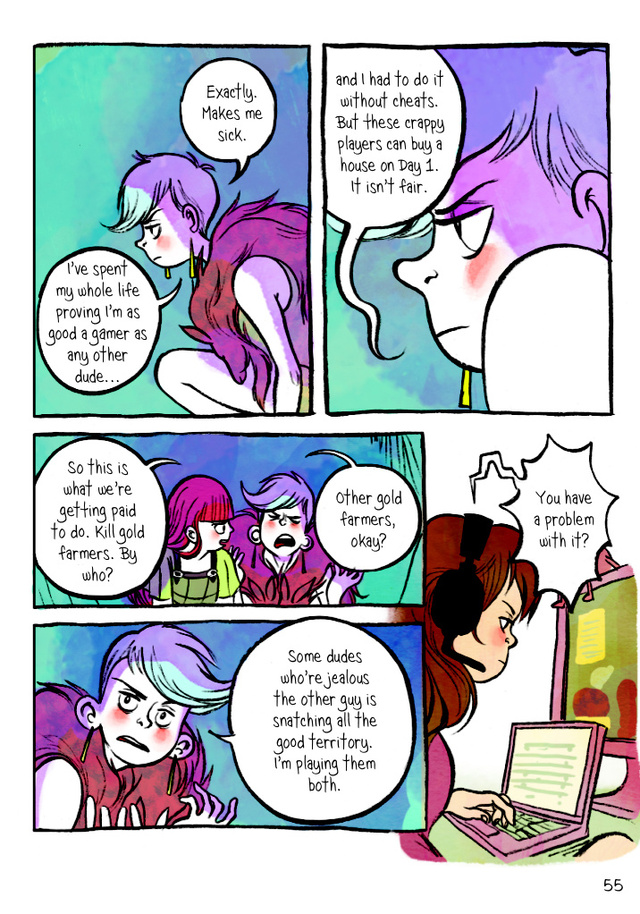On the cover, Felicia Day calls In Real Life, “A lovely graphic novel for gamer girls of all ages,” but this gem of a story, that just happens be about a girl gamer, is for everyone. This collaboration between sci-fi novelist/journalist Cory Doctorow and illustrator Jen Wang discusses the issues female gamers face by incorporating them into the plot’s periphery, making them an integral part of the story without being the main focus. Instead, a variety of social issues are explored without coming off as heavy-handed or drawing lines in the sand between groups. You could say this is a story about the gift of connectedness that everyone, especially Millennials, has in the era of the internet, and how we should be using this gift to change the world (and also play RPGs).
Anda, our main character, is a teenager who was recently uprooted from California to Arizona and is still struggling to find her footing. She’s offered a trial membership (by a hip, half-shaved Aussie no less) in an all-girls guild called the Fahrenheits for Coursegold Online, the “fastest growing massive multi-player role-playing game” around. While raiding and completing quests, Anda is approached by guild-mate Sarge, who offers her a shady opportunity to make real world money on the side. The gig? Killing the avatars of people who collect and sell in-game items that allow players to level up simply by shelling out the cash. Anda is entirely on board with killing these “gold farmers” (they belittle all of her hard work, after all) until she actually meets one and learns about the quandaries of an entire culture she never knew about on the other side of the world.
Cory Doctorow writes in his introduction that this is a book about games and economics. What a strange sell for a graphic novel, right? What he is referring to is behavioral economics and how they tend to control the lives of people in different parts of the world, how consuming a product here in the United States directly affects the people who made or interacted with that product on its way to the consumer. On top of that, the novel deals with gaming ethics, gender issues, parent/child relationships, and labor unions. The amazing part is that the plot manages to weave all of these themes together so deftly that you don’t even notice all this new knowledge you absorb because you’re too busy enjoying the story.
The narrative of this graphic novel takes place in two realms: Anda’s everyday real life and her time spent playing the RPG, which is navigated by her avatar. The two realms seem to be distinct not only by Anda’s view of them, but also by Wang’s visual representation choices: her real life has a much more muted color palette, lacking primary colors but still remaining lively with stylish clothing designs. Character faces are charming in their own way and express a full range of emotions, especially when Anda interacts with her parents. While slightly more dull than her RPG life, Anda’s life in the real world is just as significant to the story’s outcome and her development as a character.
The realm of Coursegold, on the other hand, is brighter and incorporates pastel colors and more watercolor elements. The success of this graphic novel has a lot to do with the fact that it follows Anda’s avatar in the same way that it follows Anda in real life. The reader is completely absorbed into the world of the game. When Anda’s avatar interacts with Raymond, her new gold farming friend, everything feels realistic and tangible, and Raymond’s plight becomes more accessible to the reader. He is no longer just a “collection of pixels,” as Anda calls him at one point, but a real person, a teenager just like Anda but with multiple jobs and no health insurance.
One of the most poignant moments in the book comes when Anda is cut off from her gaming privileges. Hopelessly defeated, as many teenagers are when lacking internet, she flops onto her bed and stares at her ceiling. The reader’s point of view is drawn up and out of her house in the next panel, where we see that across her neighborhood, rooftops are covered in a forest of wifi icons. This is such a simple but powerful image when you consider the scope of the story. People stay boxed inside of their homes and yet are still extremely connected to one another, to the point where it’s becoming the most significant connection. When Anda is cut off, she’s really cut off from everything.
Doctorow calls this connectedness a gift in his introduction, something past generations did not have when it came to impacting the world around them. This ability to reach out to someone across the world and help them is something really special, and that’s the ultimate message of In Real Life. Well, that and “Girls kick ass at RPGs.”
In Real Life is available today from FirstSecond.




